Vigilantism and public authority

CPAID comics series
As part of a series of six comics on public authority in different countries across Africa, Kenyan cartoonist and comic artist Victor Ndula has illustrated some of CPAID's cutting-edge research on issues of public authority, vigilantism, policing and public justice in Uganda. Based on real events, the comic asks: what happens when a town tries to fight crime using vigilantes?
View the comic here or scroll down below
I’ve always been interested in diverse forms of disseminating knowledge … illustrating this narrative allowed me to show the ambiguity about how best to tackle local insecurity.
Research on vigilantism and public authority
What is public authority, how is it produced, and what does this mean for ordinary people? New research from CPAID Research Fellow Dr Rebecca Tapscott approached these questions by studying vigilantes in northern Uganda, and their interactions with other public authorities like police and local councillors. Mirroring studies of vigilantism worldwide, findings suggest Uganda’s vigilantes have been empowered to fight crime, but their unregulated use of violence means that other actors often intervene to rein them in.
Observing this ongoing tension, between giving vigilantes authority and taking it away again, offers an unexpected insight about public authority. Unlike scholarship that assumes ‘public’ constitutes a given space, this research shows that any given ‘public’ is actually highly contested and frequently redefined. For instance, at one moment, vigilantes are given authority to police their community; at the next, the police claim that the village is under the sole jurisdiction of the police. This makes it difficult for would-be public authorities, like vigilantes, to consolidate authority. The implications are that many actors have tentative or fragile claims to public authority, fostering a complex, turbulent and unpredictable governing environment.
Presenting research as a cartoon can help disseminate knowledge outside the academy. Illustrating experiences of vigilantism, in this form, depicts the ambiguity about how to best tackle local insecurity, as well as the underlying and highly fragmented network of public authority that underpins everyday local interactions.
We hope you enjoy engaging with the artwork below.
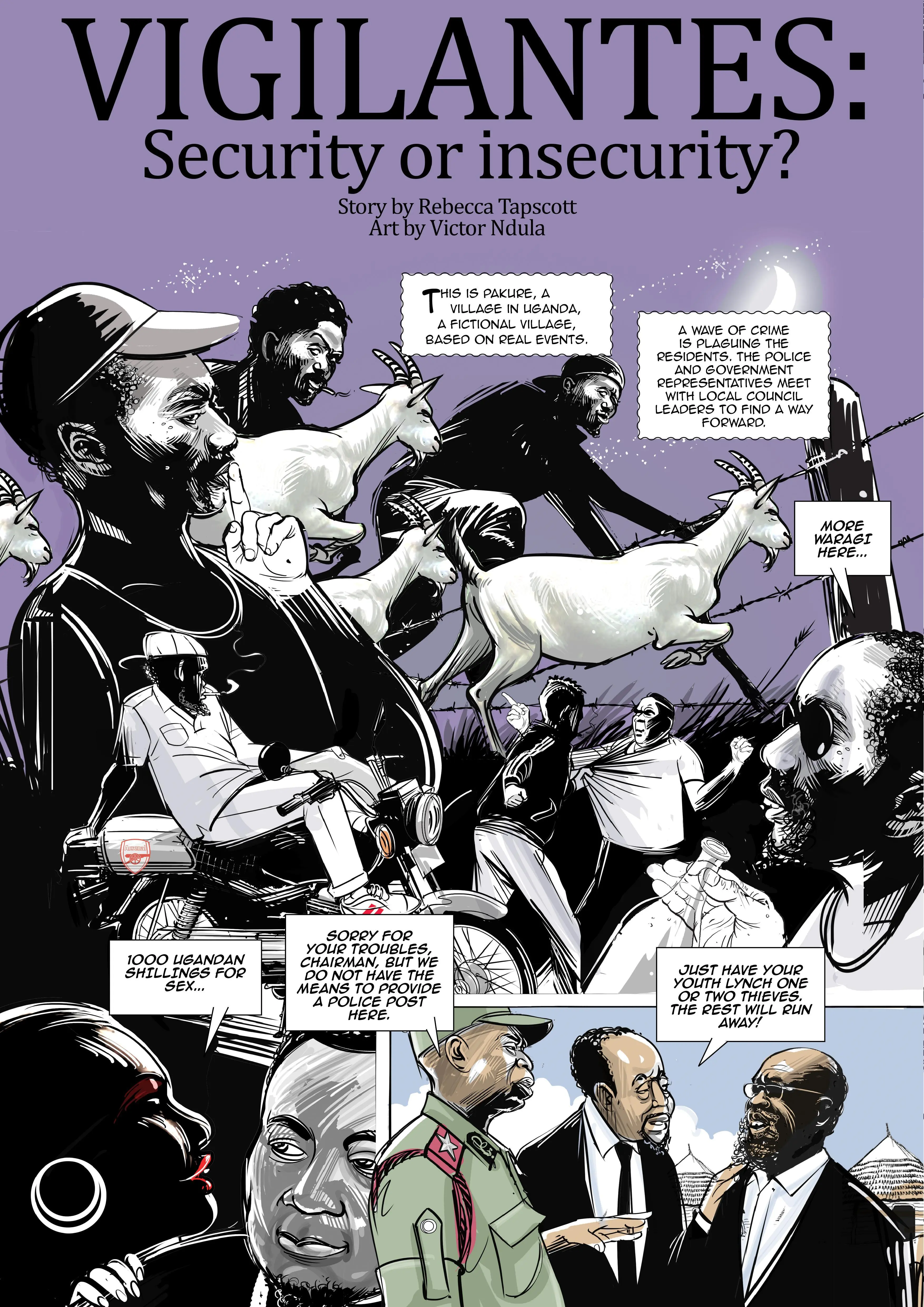
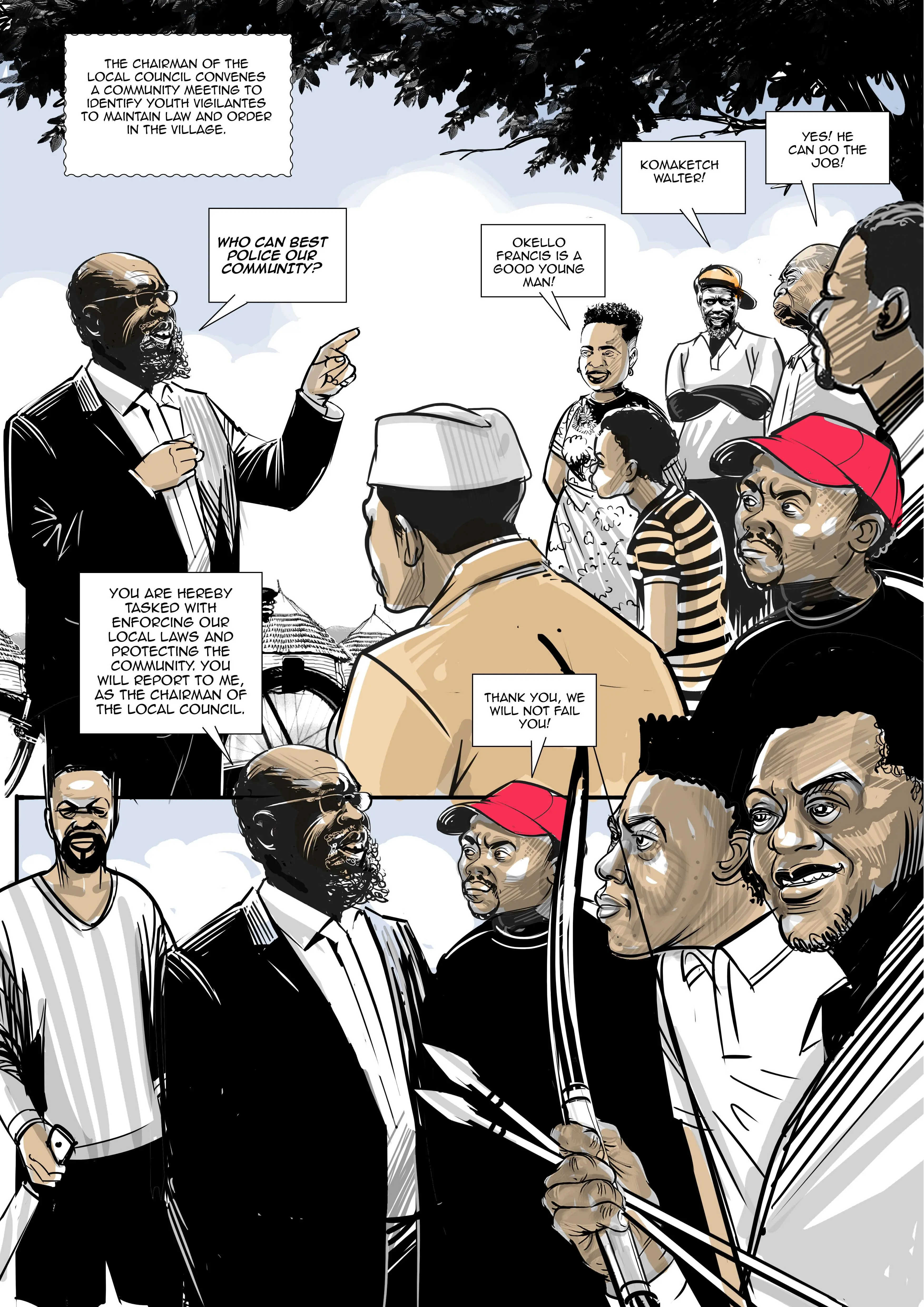
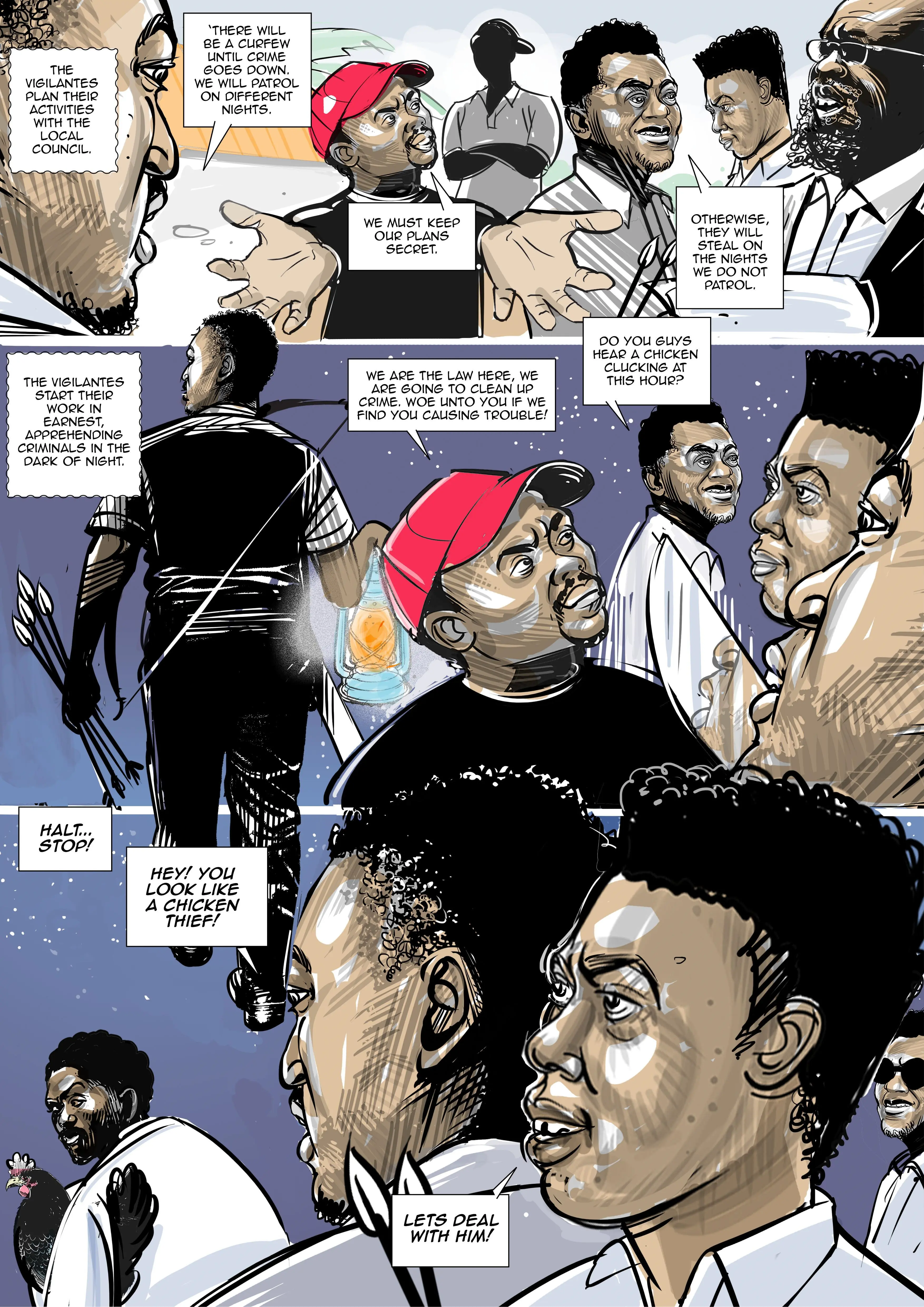
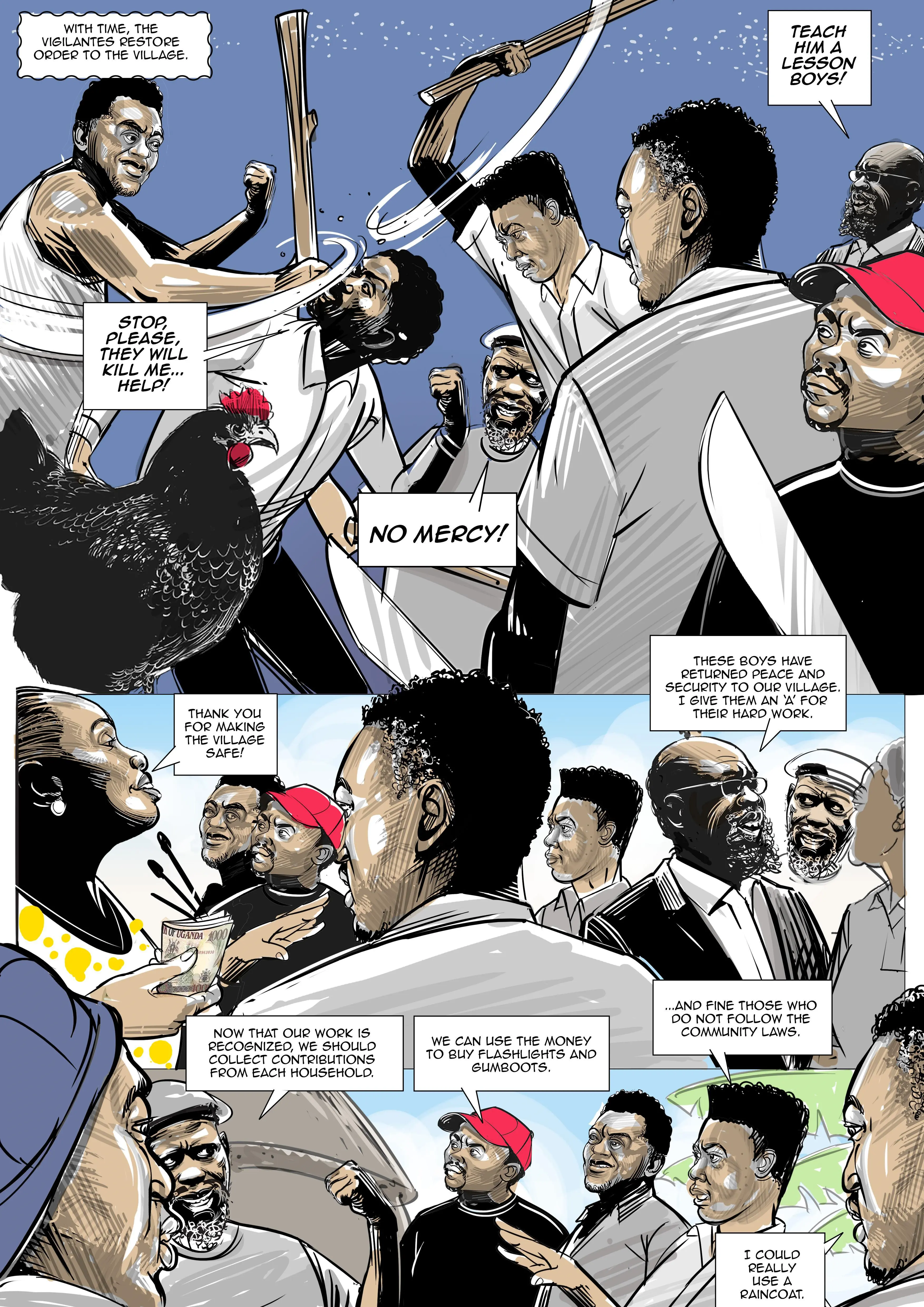
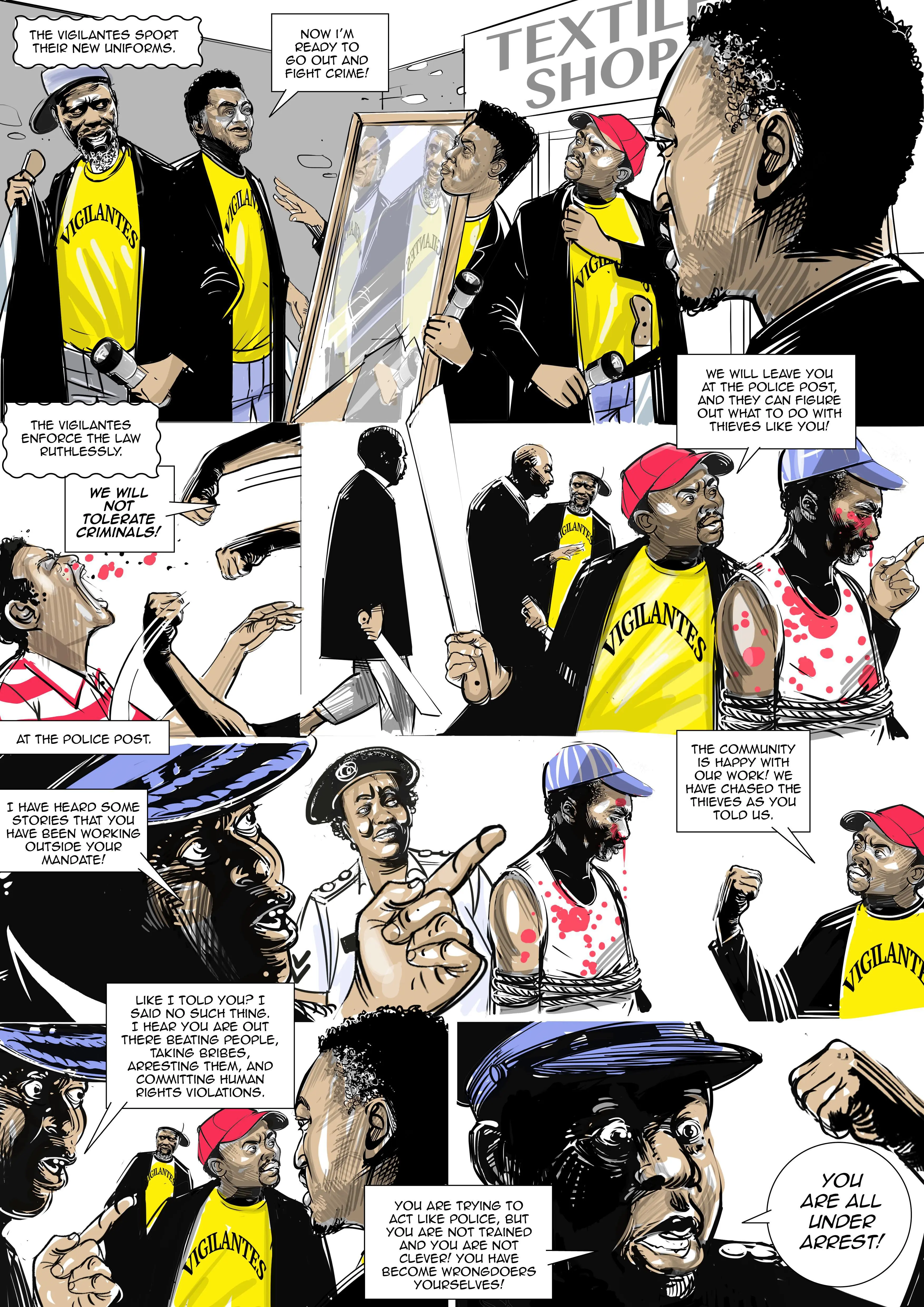
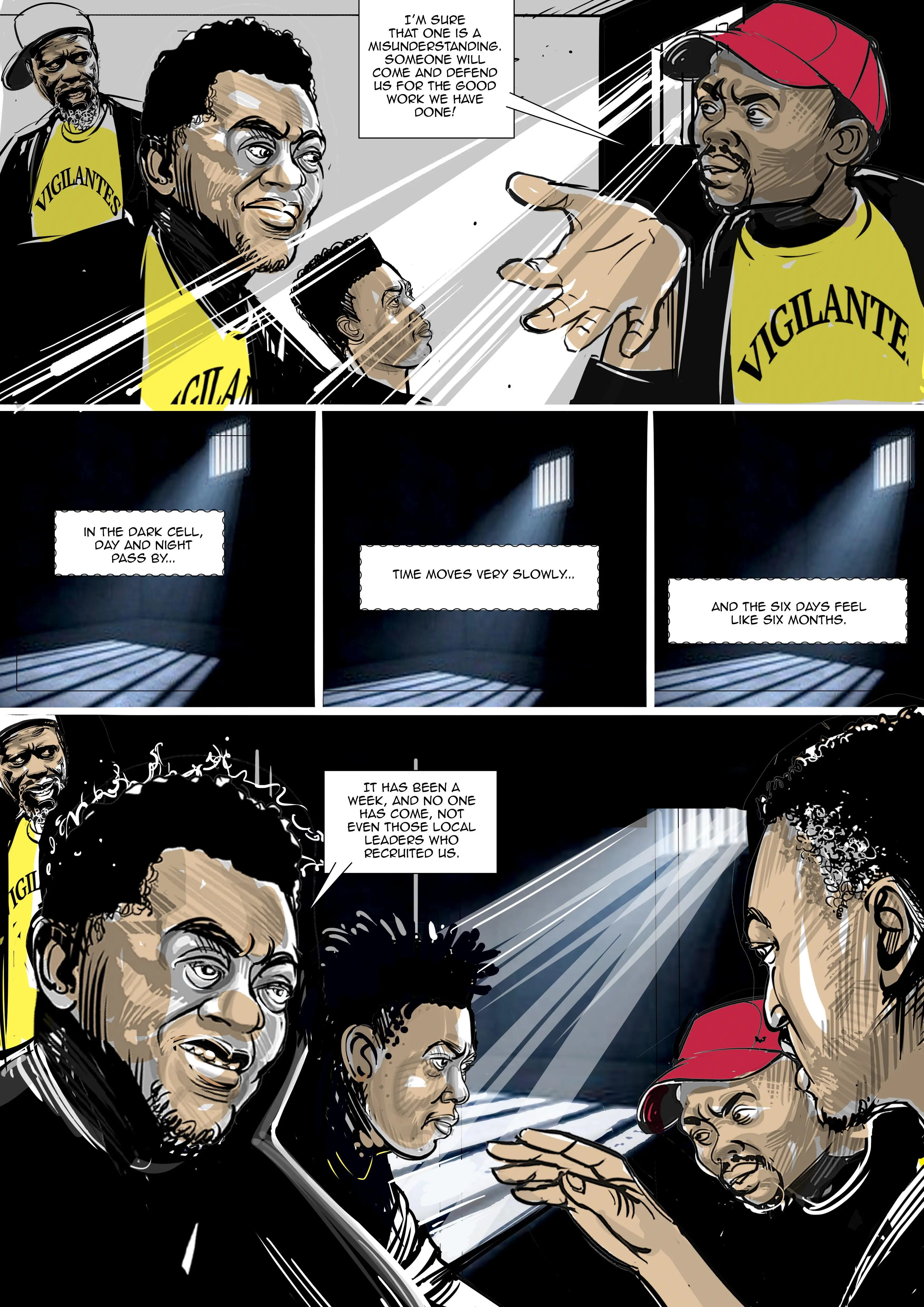
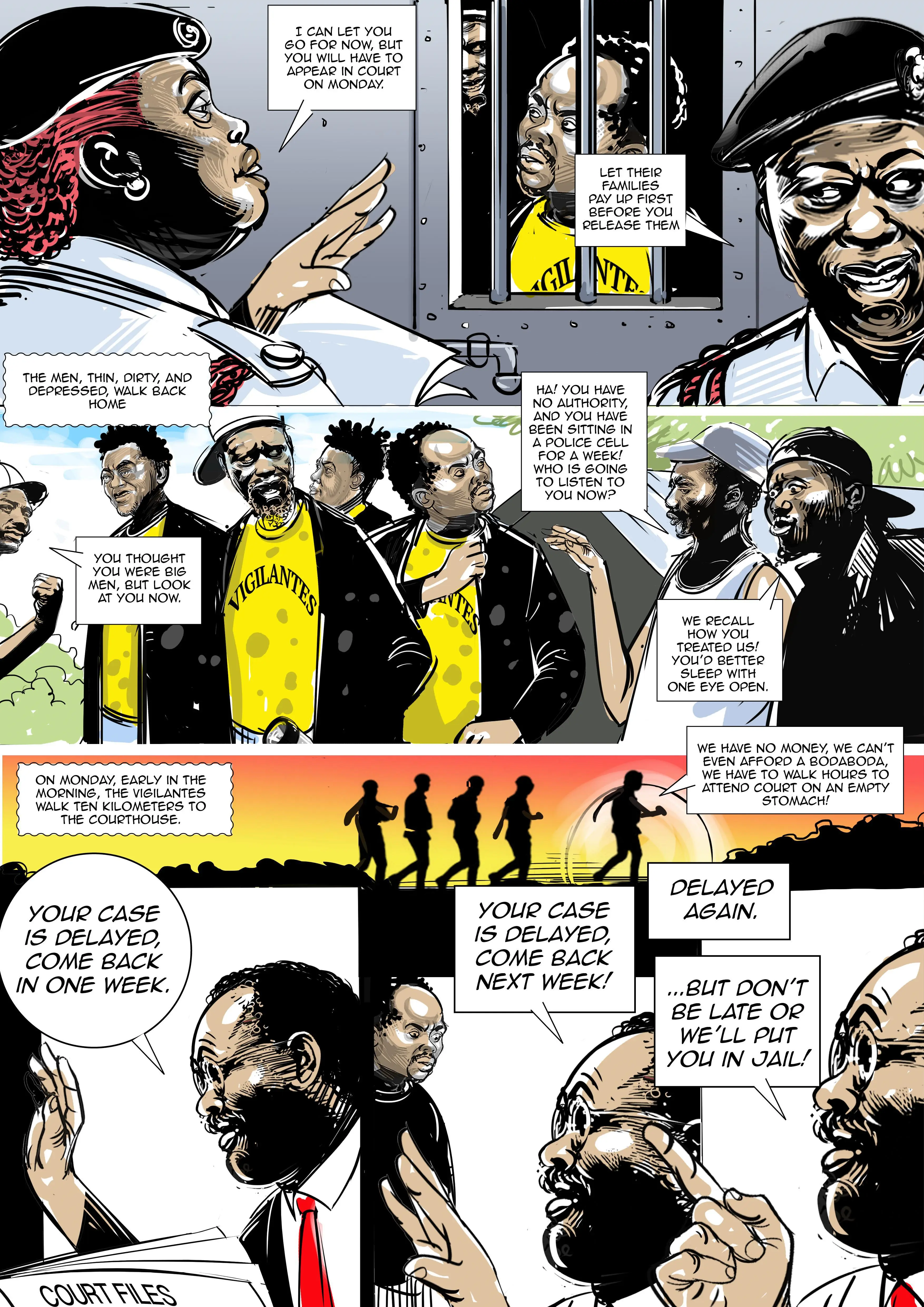
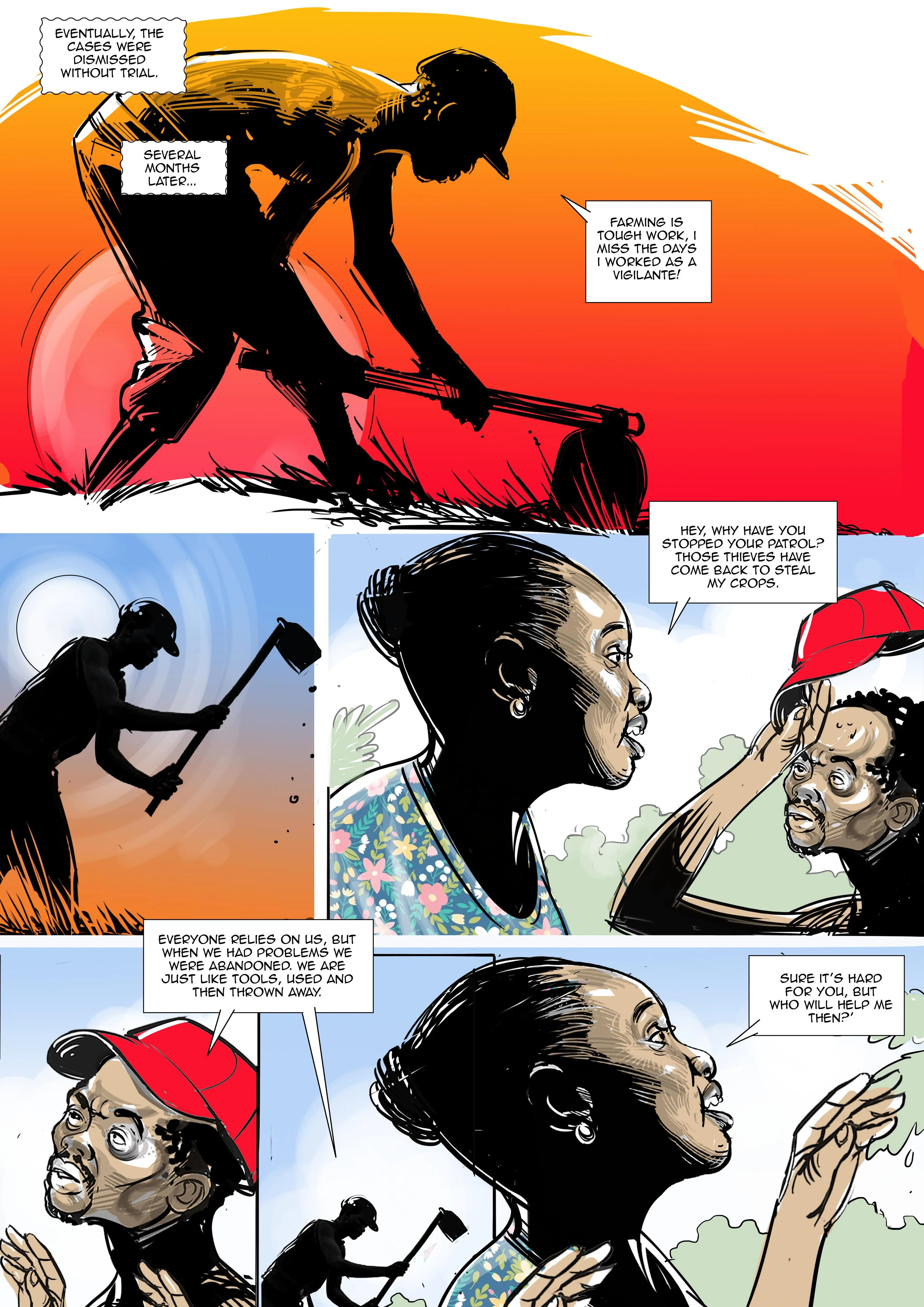
This comic was created by Cartoon Movement, a publishing platform for high quality editorial cartoons and comics journalism from all over the globe.